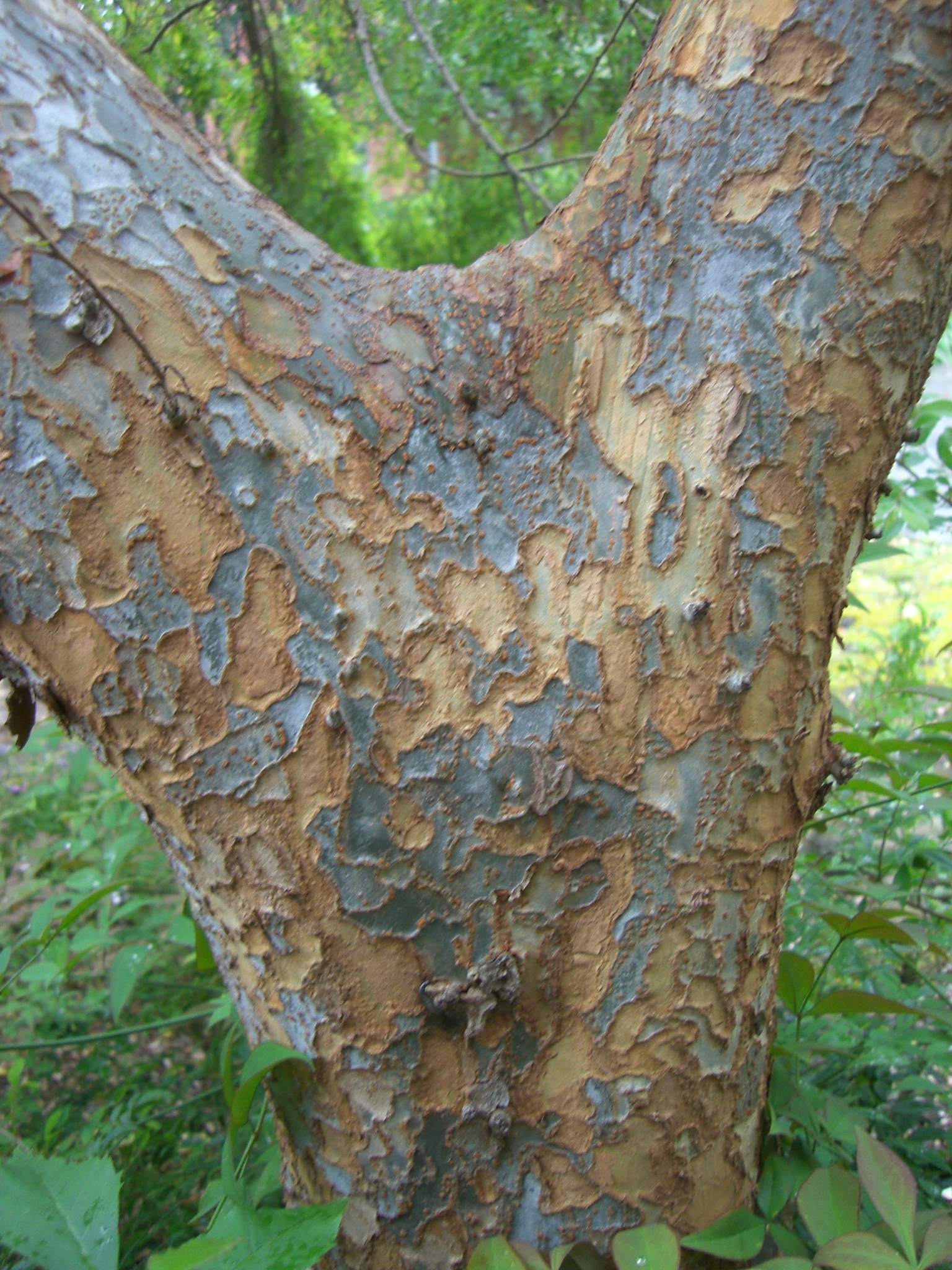
A broad crowned, evergreen (in mild climates) to semi-deciduous, non-suckering tree growing to a maximum height of about 13 m. Bark an attractive mottled orange-brown, peeling in small scales (occasionally rough, dark and fissured, hardly scaly). Branchlets dark purplish red, soft-hairy. Leaves 2.5-5(-7.5) cm long, thick, dark shining green above, paler below, elliptic to obovate, teeth mostly single, the basal lobe generally not pronounced. Leaf stalk 2-5(-10) mm long, slightly hairy. Fruit 7-9 mm long with the seed in the centre, varying in time of development from March-June. [U. chinensis Pers.]
China, Japan
One of the evergreen elm species that is allegedly resistant to Dutch Elm disease. This is a variable species which may be seen with occasional atypical dark fissured bark (as at Buninyong), abnormally large leaves, variable habit and leaf fall in winter. The typical bark is similar to that of Zelkova serrata but the leaves of the latter are more or less equal at the base and have teeth with an extended point.
Generally small-leaved evergreen tree, flowering in late summer and fruiting in autumn (not spring as with other elms); bark orange-brown and scaly; leaves differing clearly from those of U. pumila in having mostly simple teeth and soft-hairy branchlets.
SA: Kent Town ('Dr Kent's Paddock', Rundle St, major planting of both evergreen and deciduous forms); NSW. Albury (Albury Botanic Gardens); Forbes (Victoria Park); Narrandera (Park); Sydney (Royal Botanic Garden Sydney east of Morshead Fountain - rough barked, Domain northwest of the Art Gallery of New South Wales - rough barked, Hyde Park North, University of Sydney, Botany Lawn). ACT: Australian National University (rough and smooth-barked forms); Duntroon (Officers Mess).VIC: Blackburn Sth (private garden corner Burwood Hwy & Middleborough Rd, rough bark); Buninyong (street tree with fissured bark, 13 m tall in 1991); Kew (Xavier College); Kings Domain (several near Domain Rd next to Edmund Herring Reserve & nearby); Geelong (Geelong Botanic Gardens); Hampton (corner Hampton St and Beach Rd); Malvern (Hedgeley Dene Gardens; Malvern Gardens, 11 m tall in 1983); Prahran (Victoria Gardens); South Yarra (Fawkner Park); St Kilda (St Kilda Botanical Gardens).
Dirr & Richards (1989).
Source: (1997). Ulmus. In: . Horticultural Flora of South-eastern Australia. Volume 2. Flowering plants. Dicotyledons. Part 1. The identification of garden and cultivated plants. University of New South Wales Press.

Small shrub growing to 1 m or so tall with very small leaves, pale at first, about 1 cm long, white flecked mostly on the edges and most pronounced in spring.
Raised in Japan.
Probably first listed in Australia in 1982.
Vic: Beechworth (May Day Hospital near back entrance, extremely large specimen reverting to type).